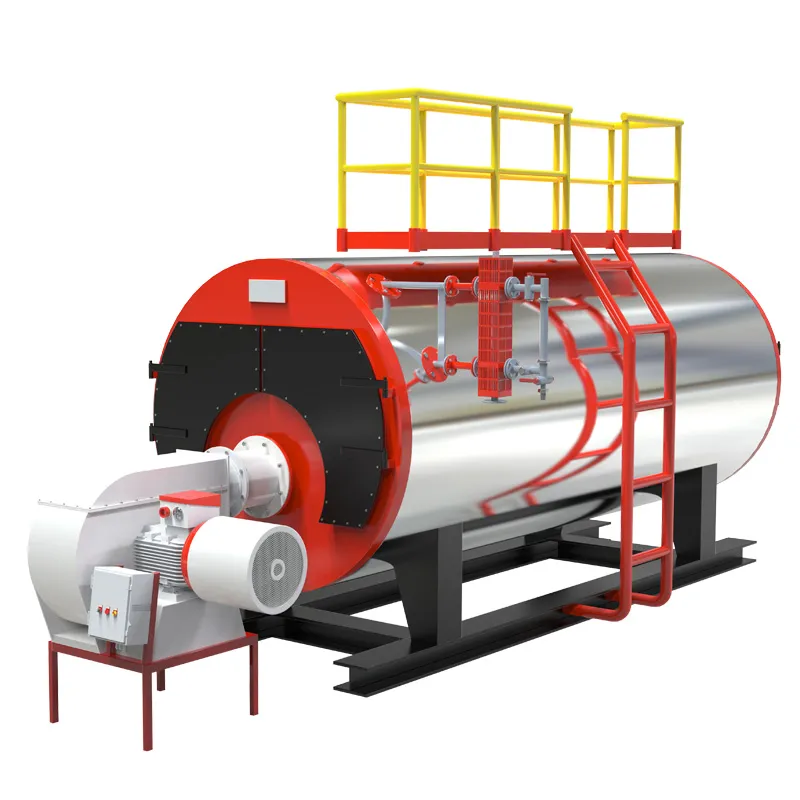
जुलाई . 30, 2024 00:25 Back to list
Comprehensive Guide to Steam Boiler Systems and Their Efficient Operation and Maintenance Techniques
Understanding Steam Boilers A Comprehensive Overview
Steam boilers are essential devices in various industries, serving as the backbone for many heating and power generation systems. These versatile machines produce steam by heating water, and they play a critical role in processes ranging from electricity generation to heating applications in commercial and residential buildings.
How Steam Boilers Work
At its core, a steam boiler operates on a simple principle converting water into steam through heat transfer. The primary fuel sources for steam boilers include natural gas, oil, coal, or electricity. The boiler consists of several key components, including a burner, combustion chamber, heat exchanger, and steam outlet.
The process begins when fuel is burned in the combustion chamber, which generates heat. This heat is transferred to the water in the heat exchanger. As the water heats up, it eventually reaches its boiling point and transforms into steam. The steam produced can then be utilized for various applications, such as powering turbines in a power plant, heating buildings, or driving industrial machinery.
Types of Steam Boilers
There are several types of steam boilers, each serving specific applications and featuring distinct designs. The most common types include
1. Fire-Tube Boilers In these boilers, hot gases from the combustion process pass through tubes that are submerged in water. The heat from these gases is transferred to the water, generating steam. Fire-tube boilers are known for their ease of maintenance and lower initial costs.
steam boiler pdf

2. Water-Tube Boilers Contrary to fire-tube boilers, water-tube boilers have water-filled tubes that are heated by surrounding hot gases. This design allows for higher pressure and efficiency, making water-tube boilers suitable for large-scale industrial applications.
3. Electric Boilers These boilers use electrical energy to heat water and produce steam. They are often used where conventional fuels are not available or in settings where minimal emissions are a priority.
4. Biomass Boilers As the name suggests, biomass boilers utilize organic materials, such as wood chips or agricultural waste, as fuel. They are an environmentally friendly alternative, promoting the use of renewable resources.
Safety and Maintenance
Steam boilers operate under high pressure and temperature, making safety a paramount concern. Regular inspections and maintenance are crucial to ensure safe operation. Key safety features often include pressure relief valves, water level indicators, and automatic shut-off systems. Operators must be thoroughly trained and follow strict safety protocols to prevent accidents.
Periodic maintenance involves checking for leaks, cleaning the burner and heat exchanger, and testing safety devices. Operators should also monitor the water quality to prevent scaling and corrosion within the boiler system.
Conclusion
In conclusion, steam boilers are indispensable in various sectors, providing an efficient means of producing steam for heating and power generation. Understanding the different types of boilers and their operations can help industries select the most appropriate technology for their needs. Moreover, ensuring regular maintenance and adhering to safety standards will facilitate the reliable and efficient functioning of these vital machines. As industries continue to evolve and seek sustainable energy solutions, the significance of steam boilers will undoubtedly remain pivotal in meeting modern energy demands.
-
High-Efficiency Commercial Oil Fired Steam Boiler for Industry
NewsJul.30,2025
-
High-Efficiency Biomass Fired Thermal Oil Boiler Solutions
NewsJul.30,2025
-
High Efficiency Gas Fired Thermal Oil Boiler for Industrial Heating
NewsJul.29,2025
-
High-Efficiency Gas Fired Hot Water Boiler for Sale – Reliable & Affordable
NewsJul.29,2025
-
High Efficiency Biomass Fired Hot Water Boiler for Industrial and Commercial Use
NewsJul.29,2025
-
High-Efficiency Biomass Fired Hot Water Boiler for Industrial Use
NewsJul.28,2025
Related PRODUCTS






















